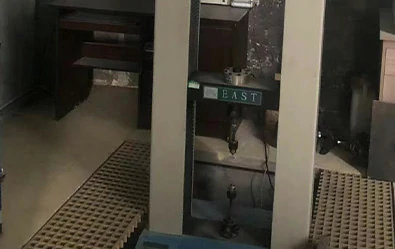loading...
- No. 9, Xingyuan South Street, Dongwaihuan Road, Zaoqiang County, Hengshui, Hebei, China
- admin@zjcomposites.com
- +86 15097380338
- Welcome to visit our website!
floor grating
Understanding Floor Grating A Comprehensive Overview
Floor grating is an essential component in various industrial, commercial, and architectural applications. It serves multiple purposes, from ensuring safety and accessibility to providing efficient drainage and ventilation. This article delves into the different types of floor grating, their materials, applications, benefits, and maintenance considerations.
Types of Floor Grating
1. Steel Grating One of the most common types, steel grating is known for its strength and durability. It can support heavy loads, making it suitable for industrial environments such as factories, warehouses, and machinery areas. Steel grating is available in different configurations, including welded, press-locked, and riveted styles.
2. Fiber Glass Grating This type of grating is made from reinforced fiberglass. It is particularly popular in environments where corrosive substances are present, such as chemical plants and wastewater treatment facilities. Fiber glass grating is lightweight, resistant to chemicals, and can cater to various design specifications.
3. Aluminum Grating Aluminum grating is lightweight and highly resistant to corrosion, making it ideal for outdoor applications or areas with high humidity. It is often used in walkways, platforms, and stairs due to its excellent strength-to-weight ratio.
4. Plastic (PVC) Grating Plastic grating is another alternative, ideal for light-duty applications where a non-corrosive solution is needed. It is often used in swimming pools, amusement parks, and commercial kitchens due to its ease of maintenance and safety features.
Applications of Floor Grating
Floor grating is employed in a wide range of environments, including
- Industrial Facilities In factories and plants, floor grating allows for the safe movement of personnel while facilitating the effective drainage of liquids, thereby preventing slip hazards
.- Commercial Buildings Offices and retail spaces utilize decorative grating to enhance aesthetics while ensuring safety and compliance with building regulations.
- Public Infrastructure Grating is essential in public spaces such as parks, transit stations, and pedestrian walkways, helping to ensure safety and accessibility.
- Marine Applications Grating plays a crucial role on ships and offshore platforms, where it provides safe access points while allowing water to drain away.
floor grating

Benefits of Using Floor Grating
1. Safety Floor grating provides slip-resistant surfaces and minimizes the risk of accidents in various settings, particularly in industrial environments where spills are common.
2. Drainage and Ventilation The open design of floor grating allows for optimal drainage and airflow, preventing the buildup of water and ensuring that air can circulate freely, which is vital in many industrial operations.
3. Weight Reduction Compared to solid floors, grating reduces dead load without sacrificing strength, making it an economical option for construction projects.
4. Customizability Floor grating can be manufactured to specific dimensions, load requirements, and anti-slip features, allowing for specialized applications tailored to the unique needs of a project.
Maintenance Considerations
While floor grating is generally low-maintenance, several factors should be considered
- Regular Inspections Conducting inspections helps identify any signs of corrosion, wear, or damage, which can affect safety and performance.
- Cleaning Depending on the environment, regular cleaning may be necessary to prevent the accumulation of debris, which can hinder drainage and pose safety risks.
- Repairs and Replacement If grating sections become damaged, timely repairs or replacements are crucial to maintain safety standards.
Conclusion
In summary, floor grating is a versatile and essential component in a multitude of applications, offering safety, drainage, and ventilation solutions. With various materials available, including steel, fiberglass, aluminum, and plastic, floor grating can be customized to meet specific needs, making it a valuable asset in both industrial and commercial settings. By understanding the types, applications, benefits, and maintenance requirements of floor grating, users can make informed decisions, enhancing workplace safety and operational efficiency.
-
The Rise of FRP Profiles: Strong, Lightweight, and Built to LastNewsJul.14,2025
-
SMC Panel Tanks: A Modern Water Storage Solution for All EnvironmentsNewsJul.14,2025
-
GRP Grating: A Modern Solution for Safe and Durable Access SystemsNewsJul.14,2025
-
Galvanized Steel Water Tanks: Durable, Reliable, and Ready for UseNewsJul.14,2025
-
FRP Mini Mesh Grating: The Safer, Smarter Flooring SolutionNewsJul.14,2025
-
Exploring FRP Vessels: Durable Solutions for Modern Fluid HandlingNewsJul.14,2025
-
GRP Structures: The Future of Lightweight, High-Performance EngineeringNewsJun.20,2025
